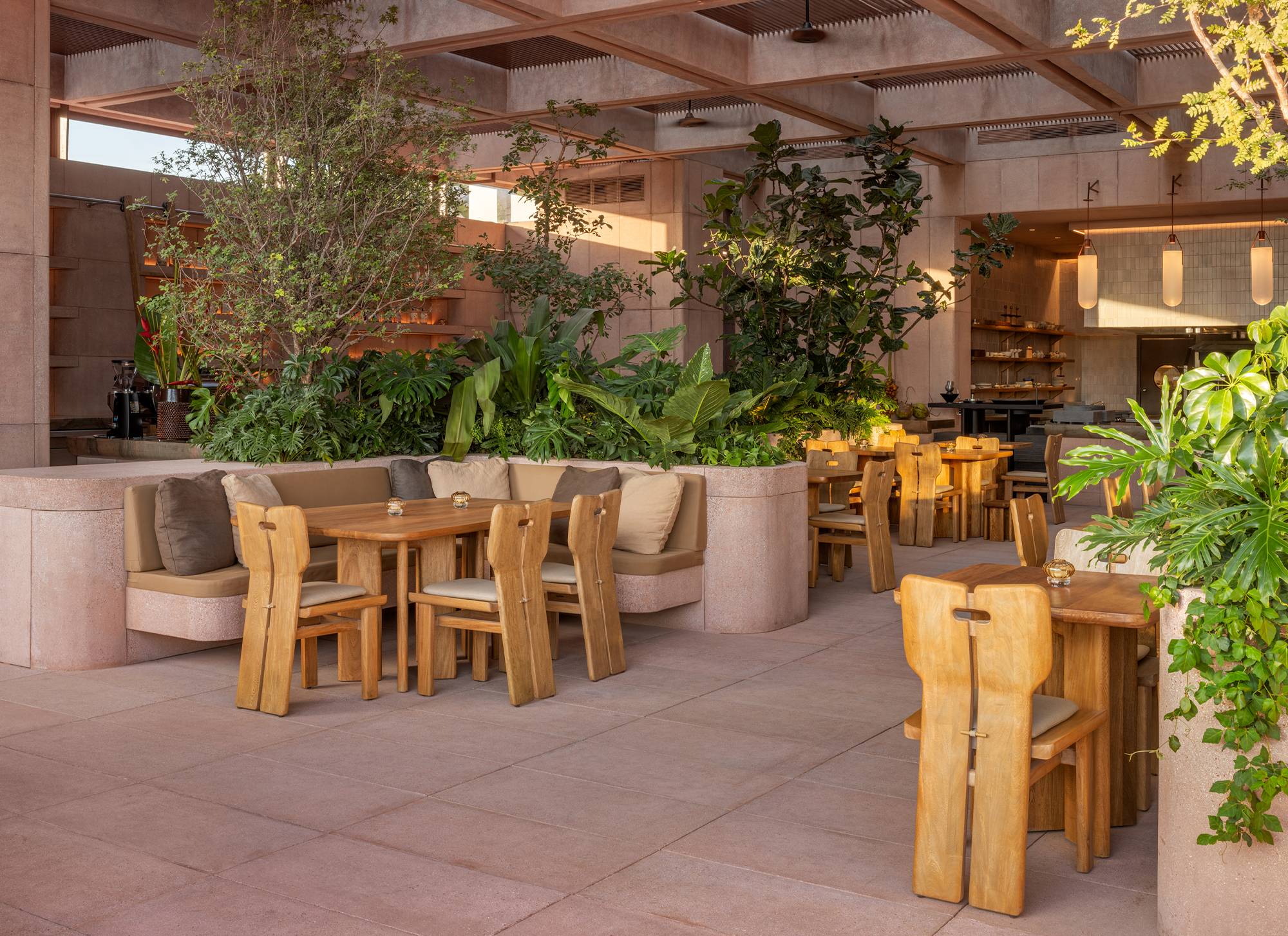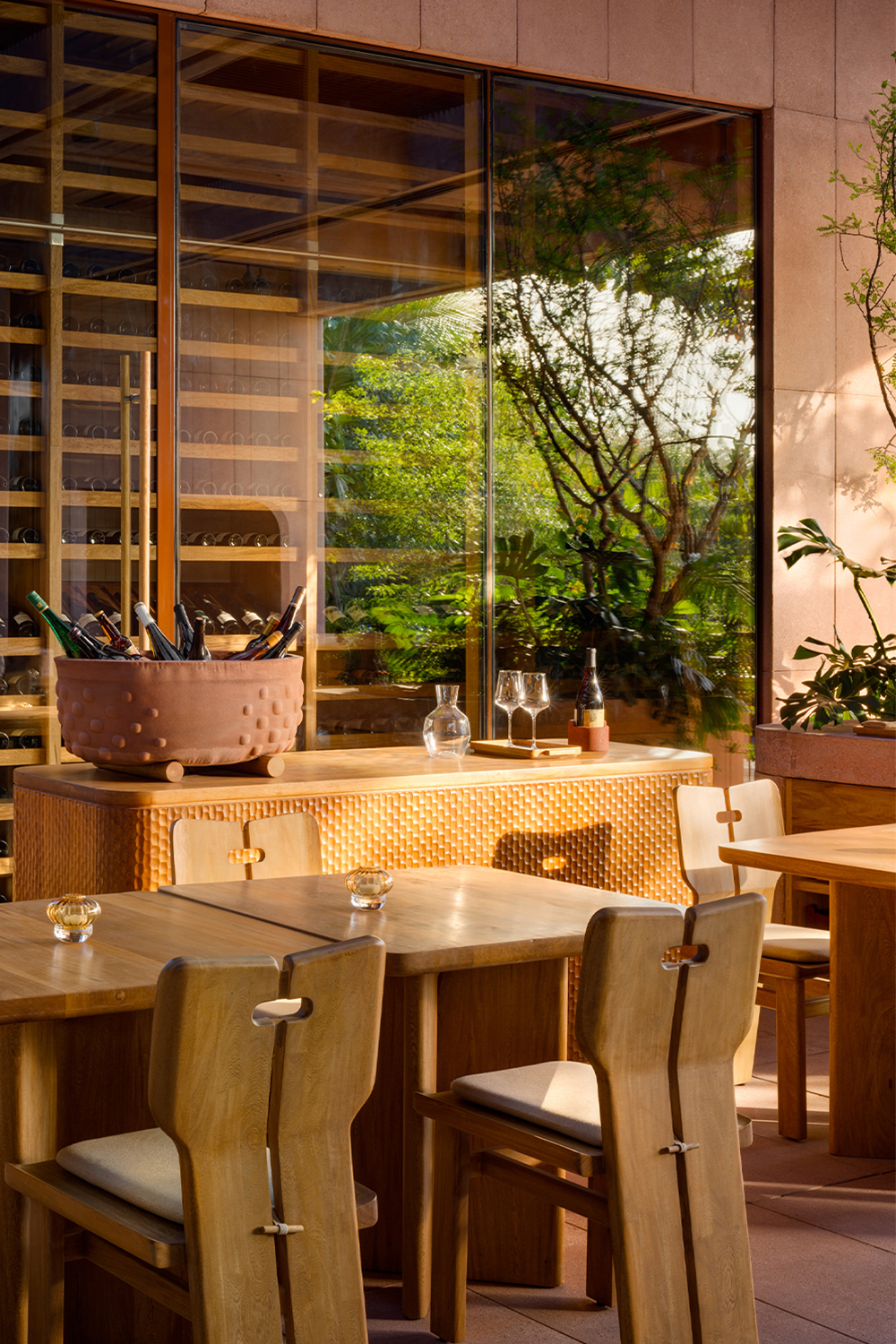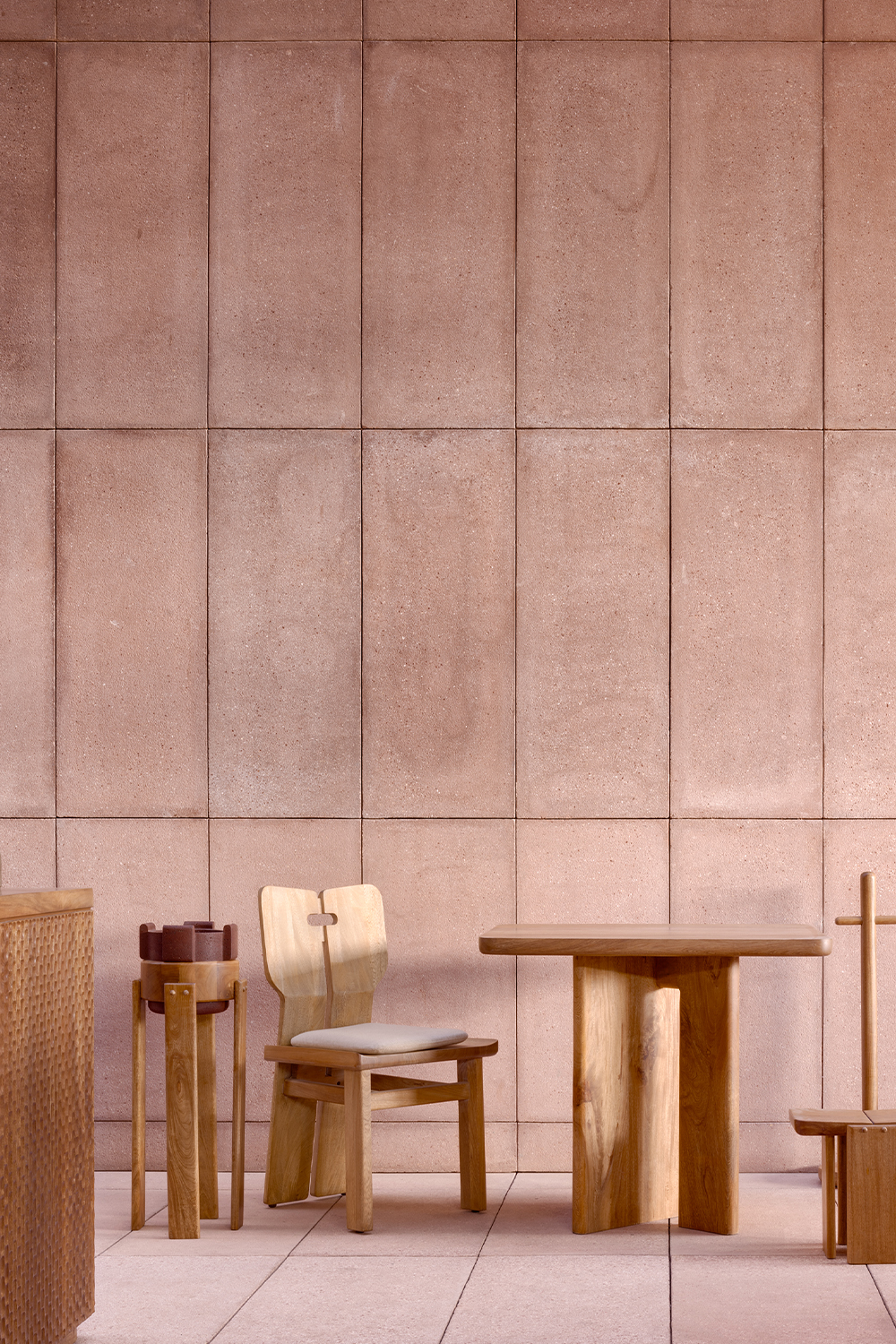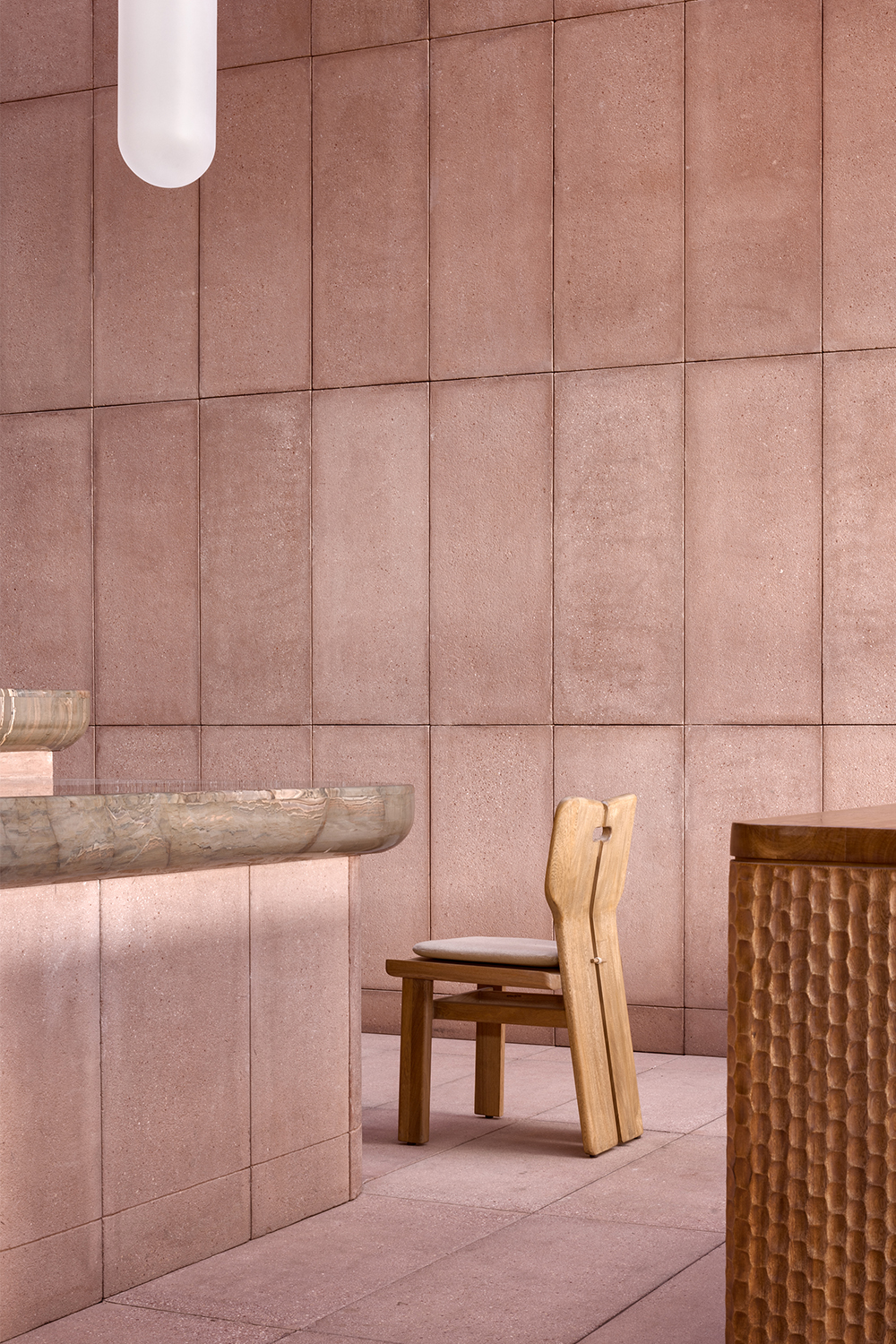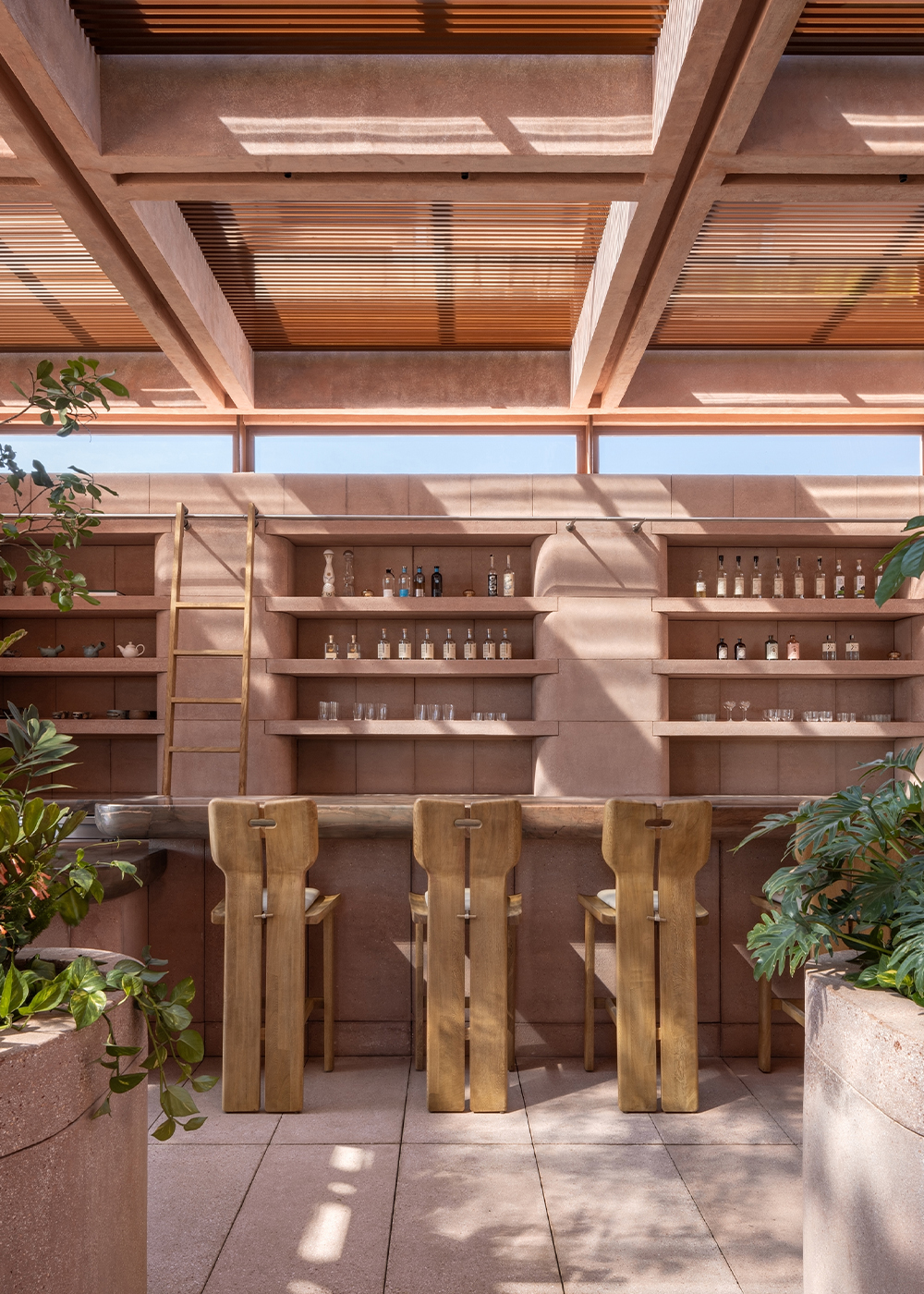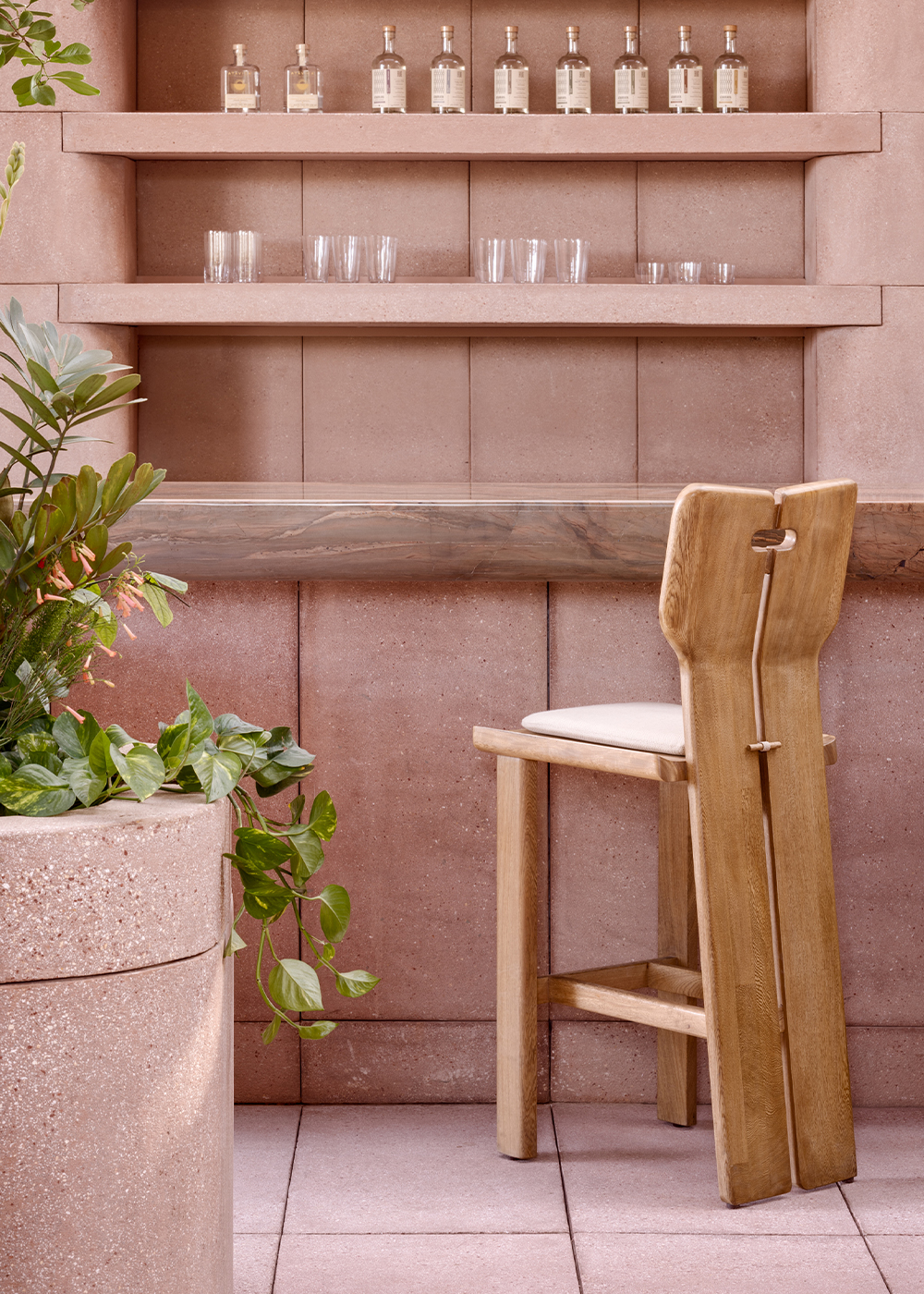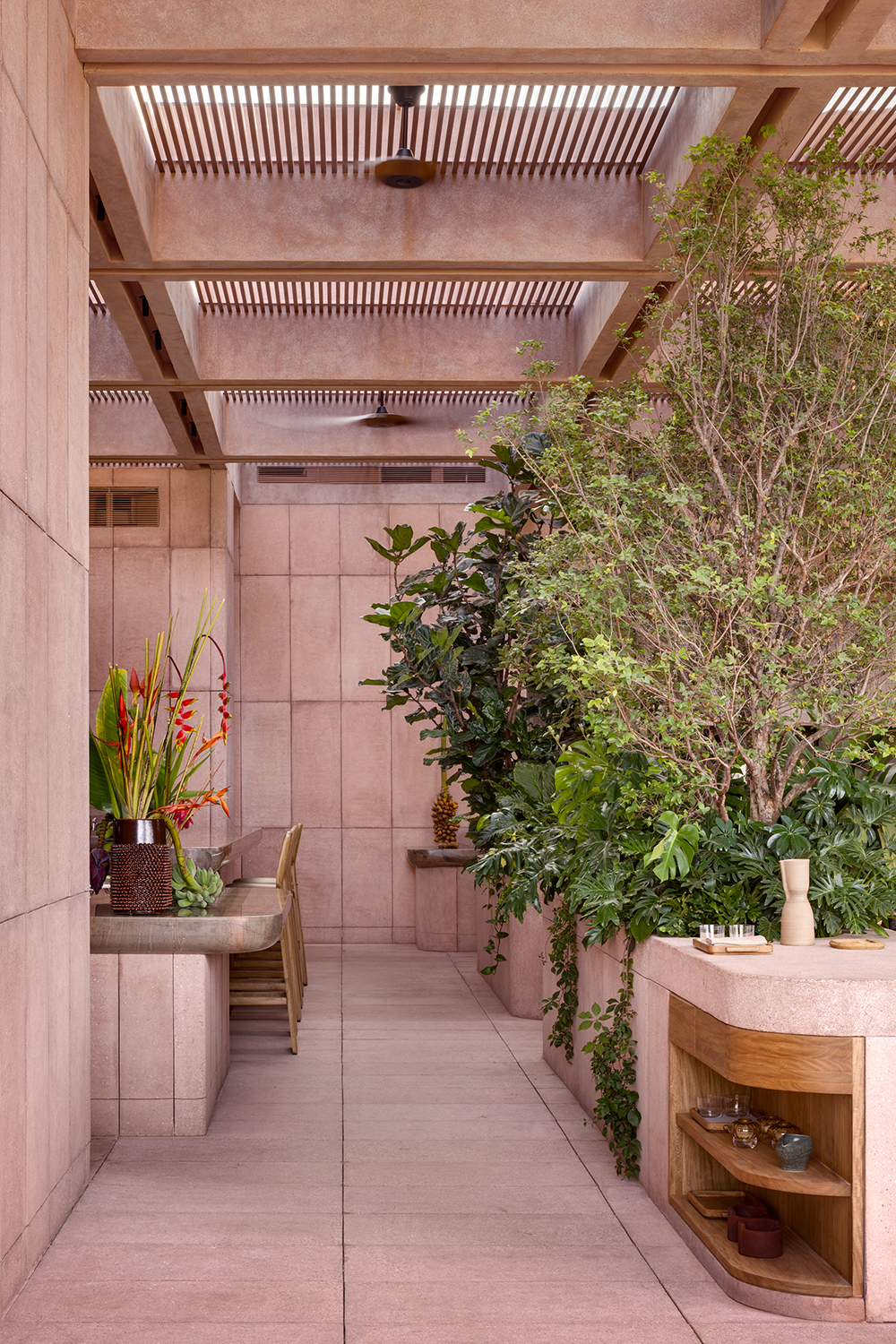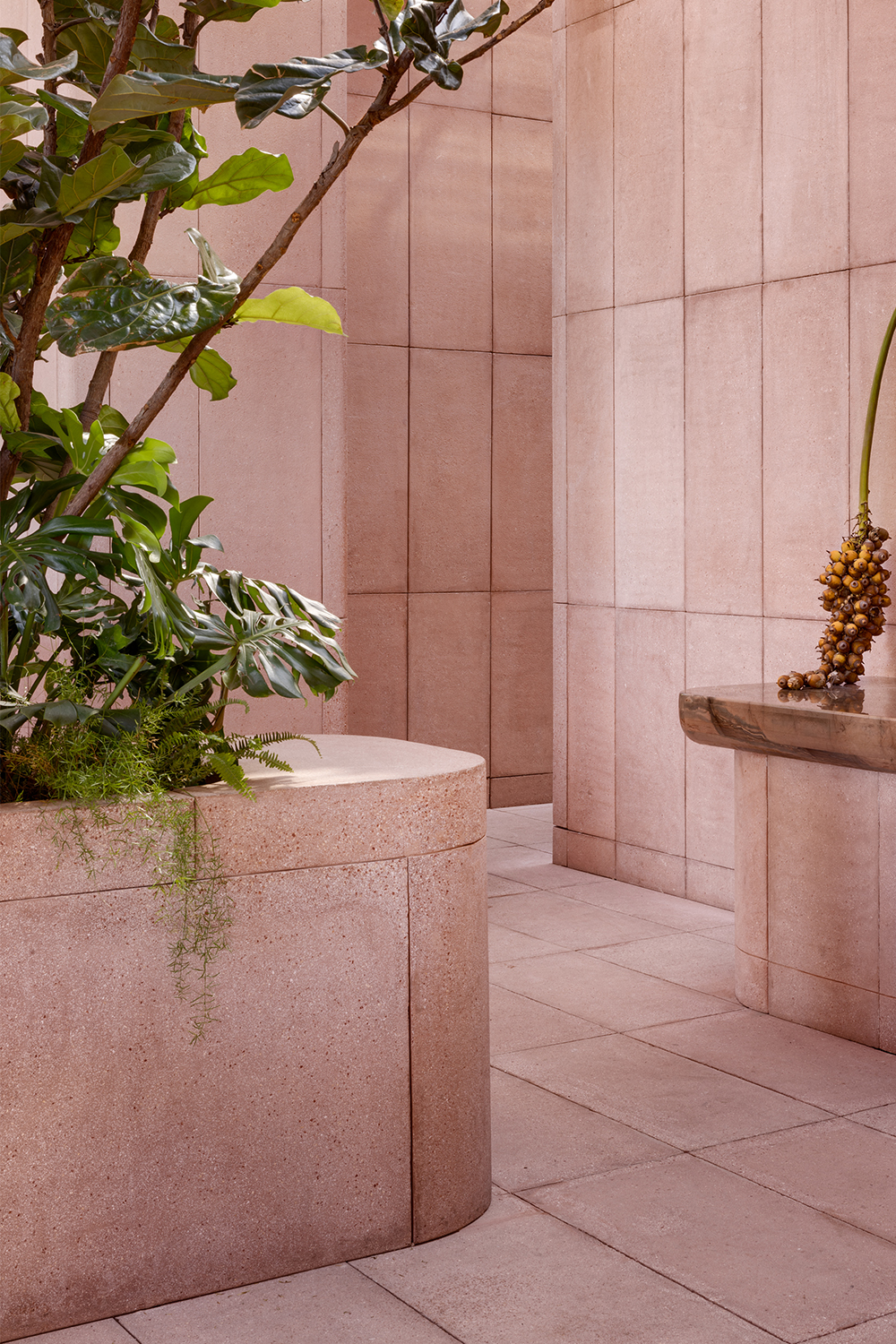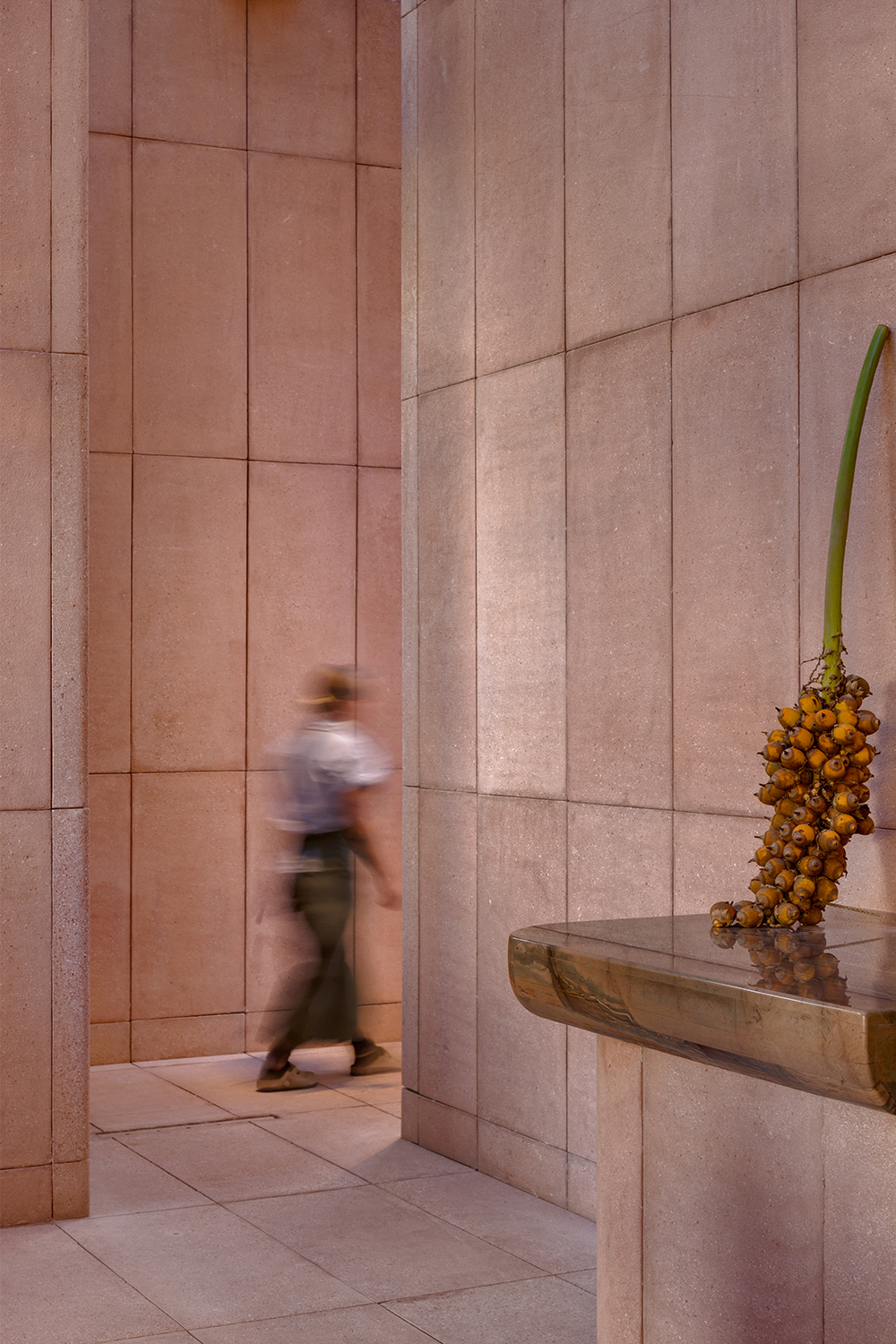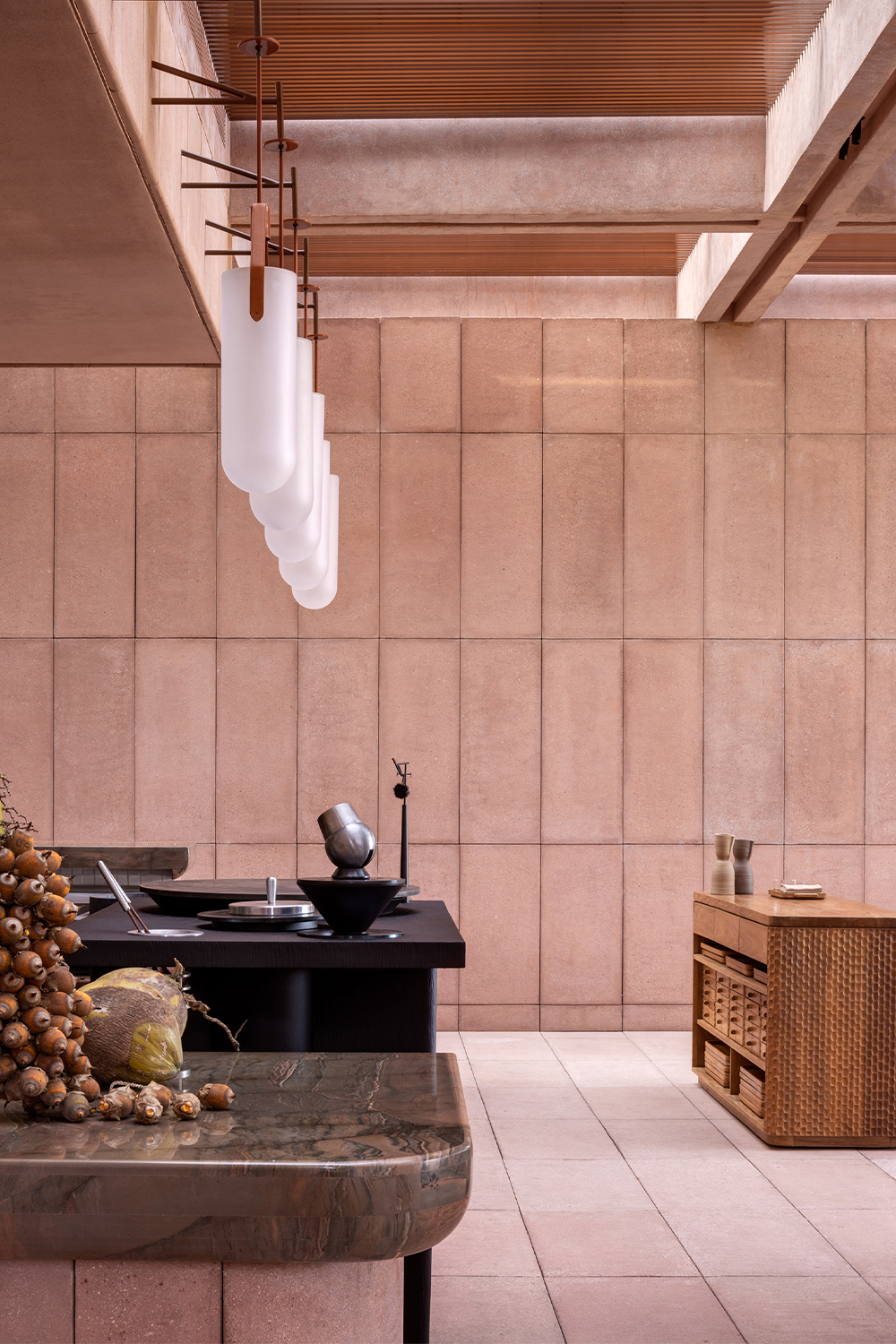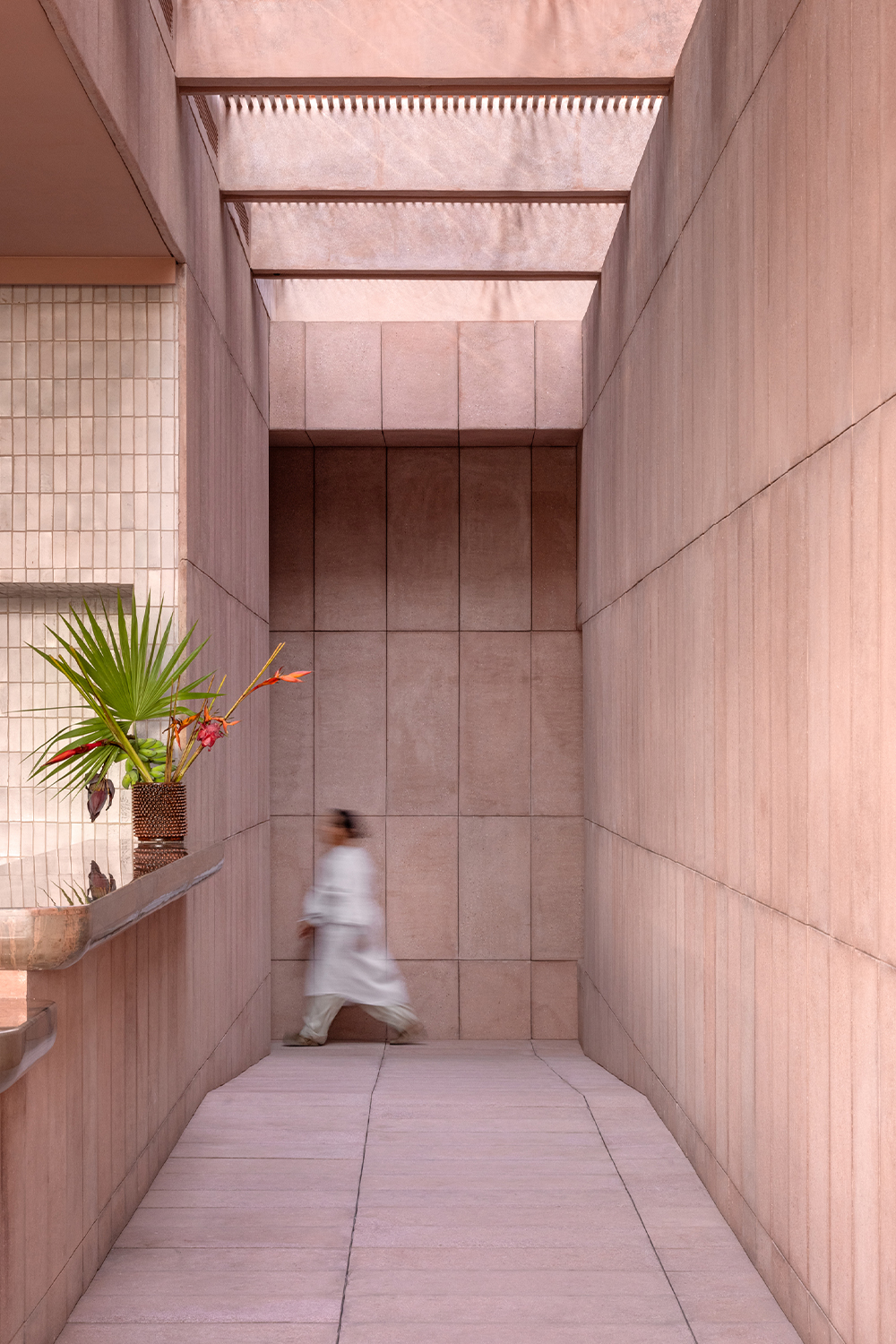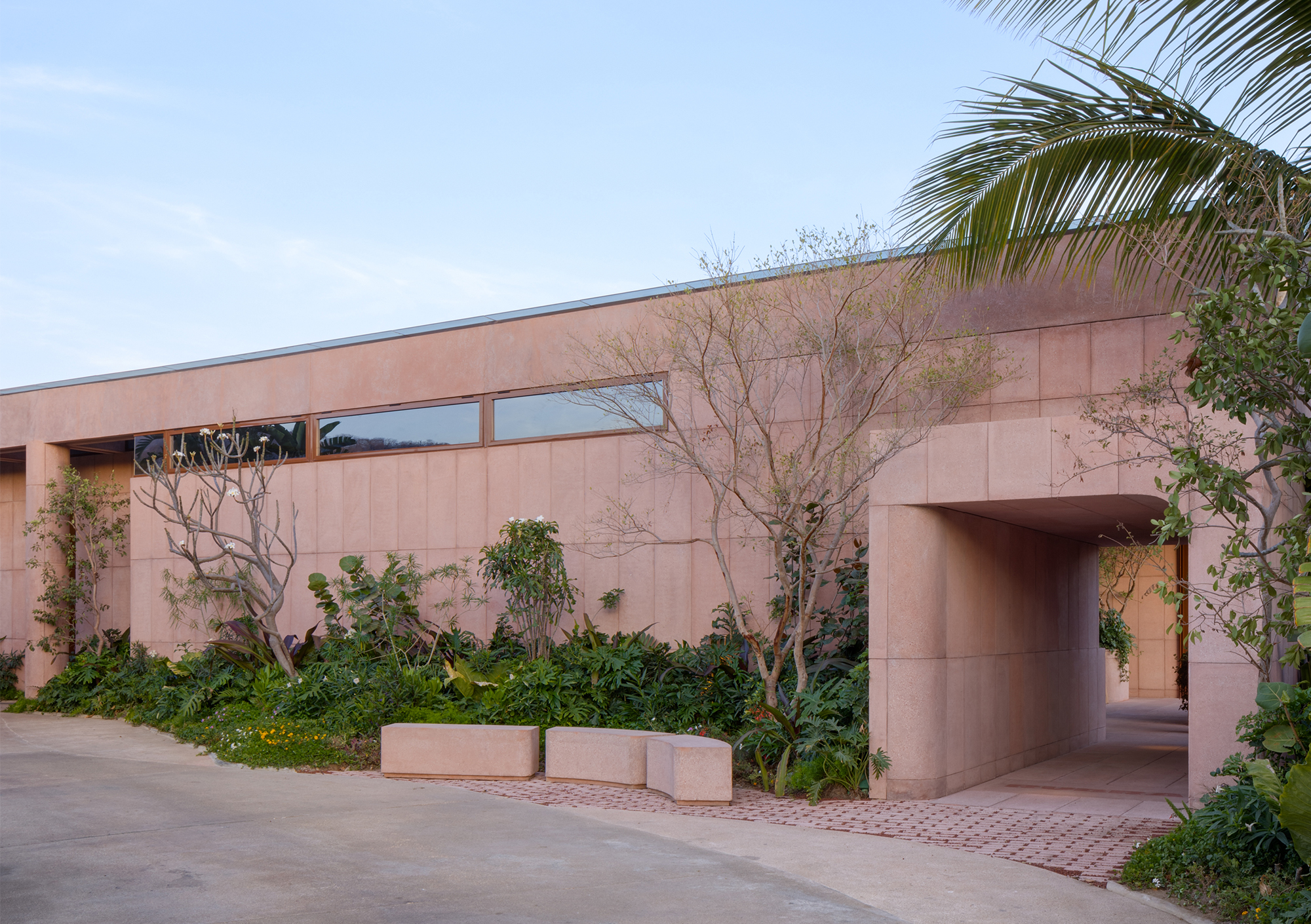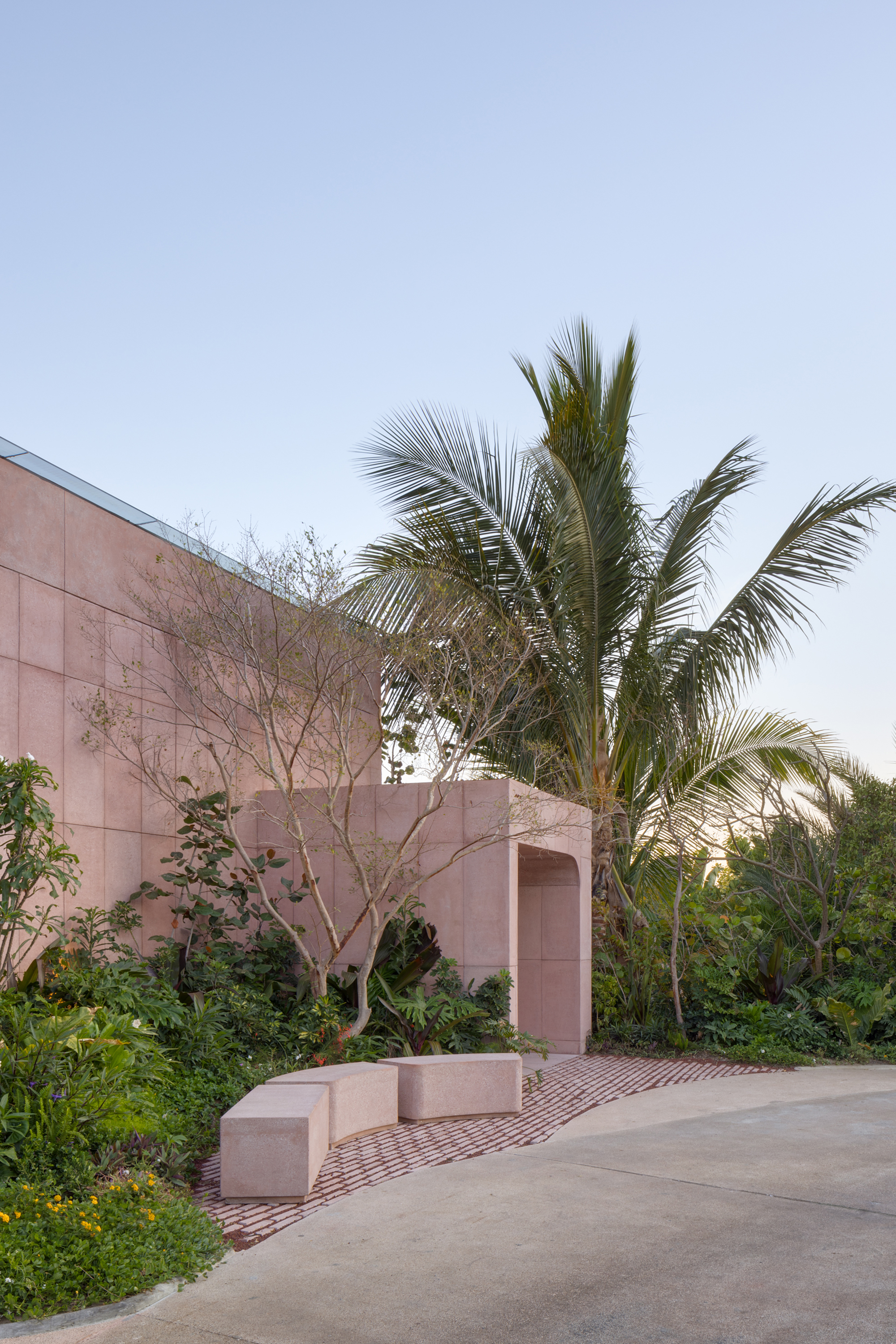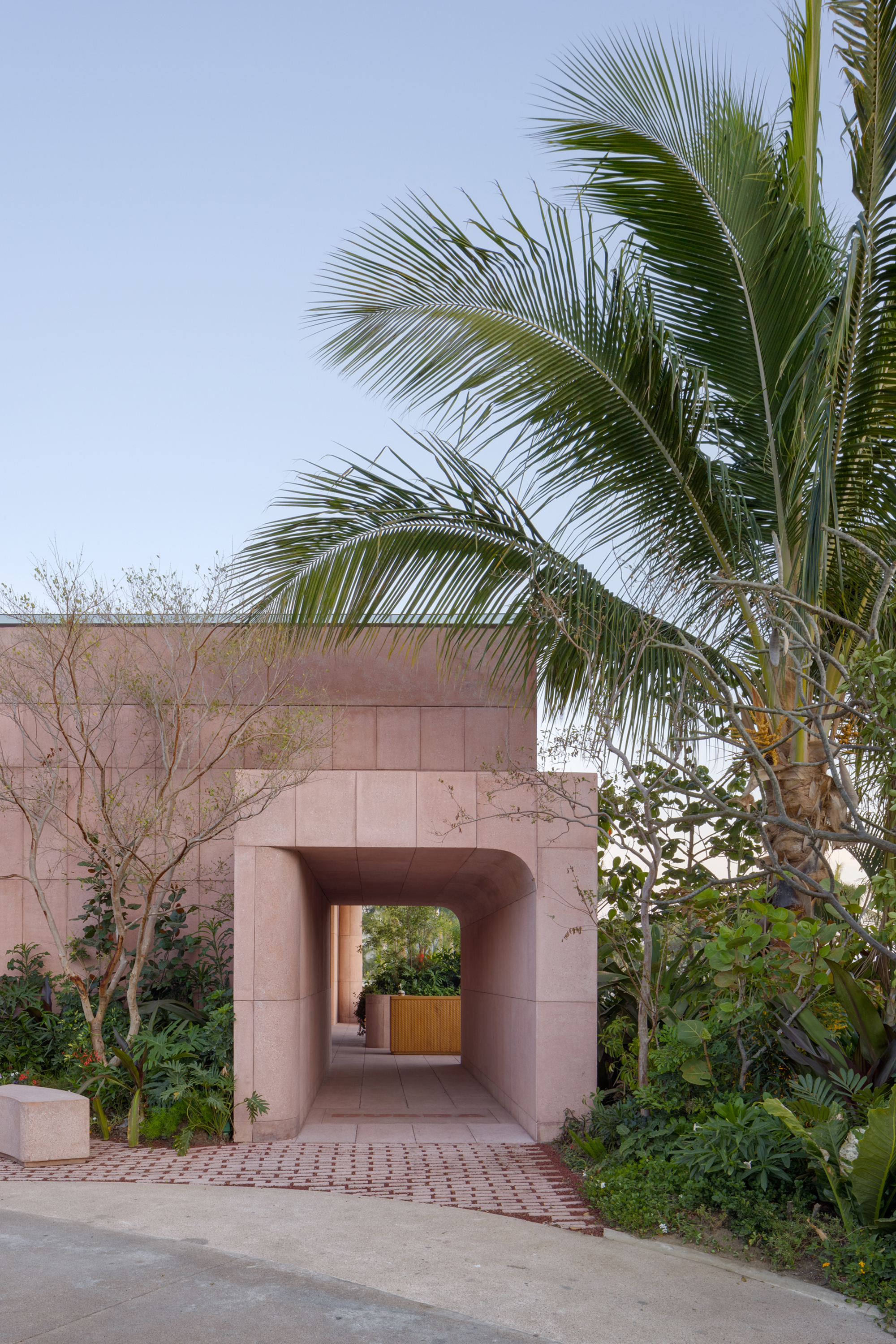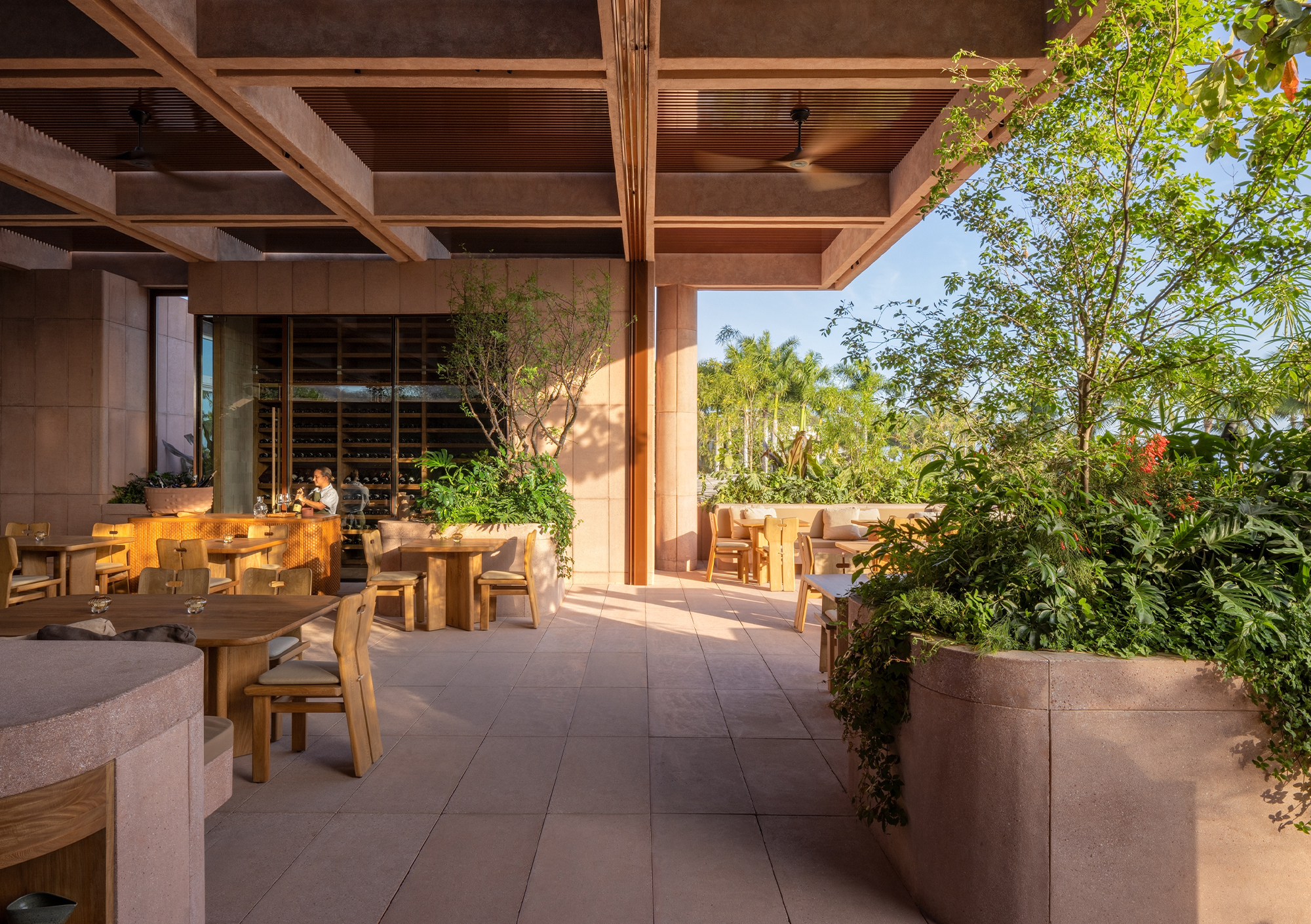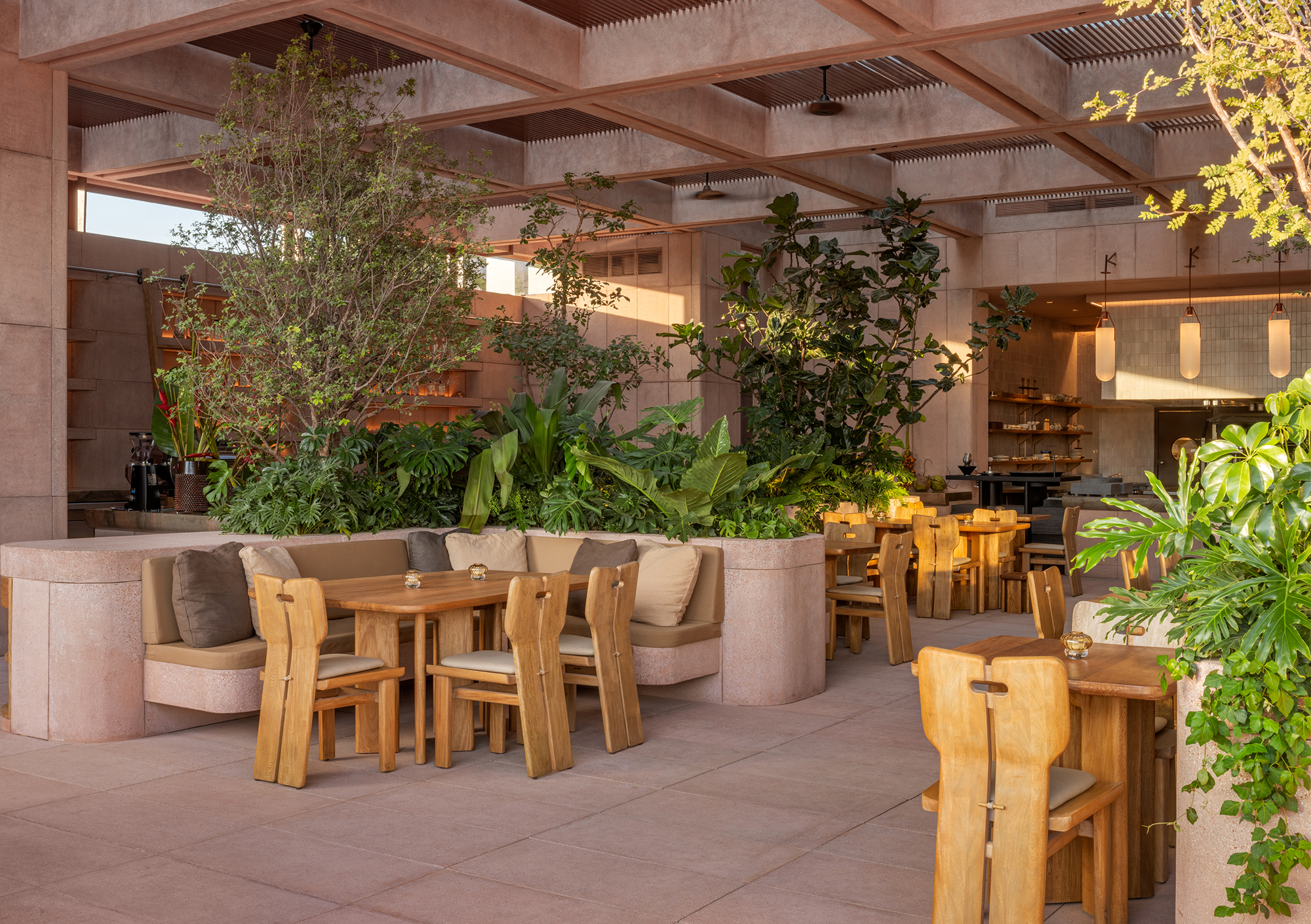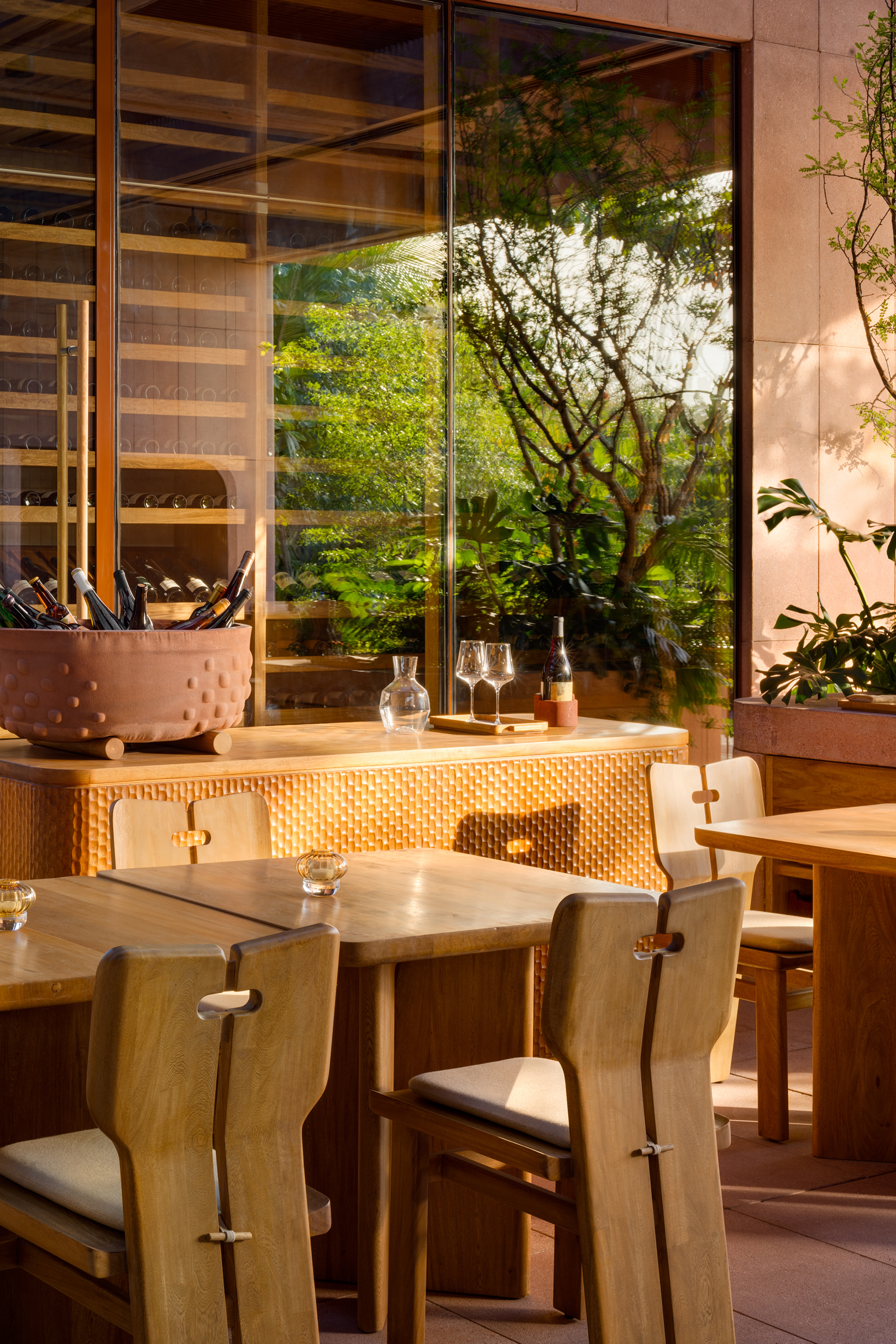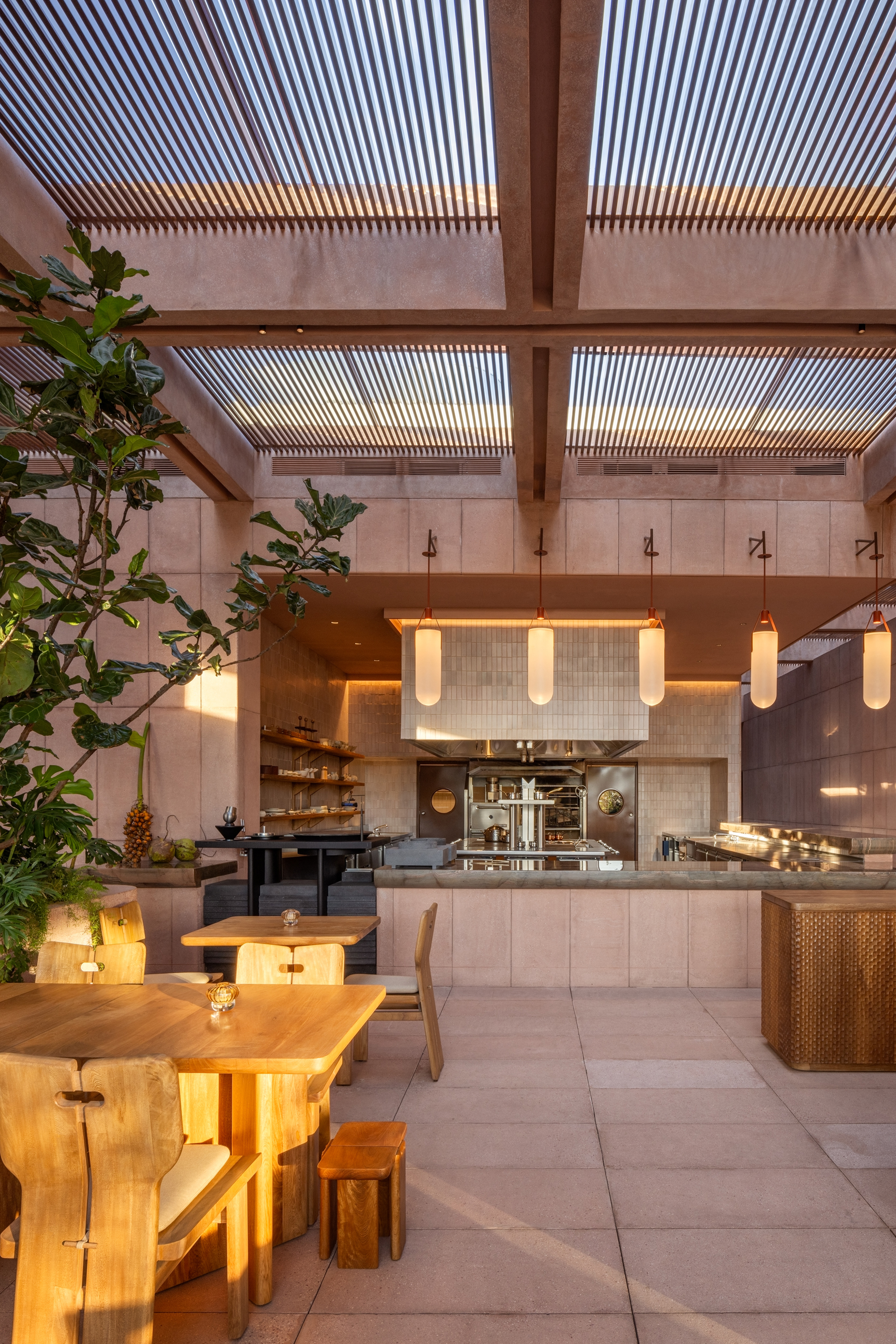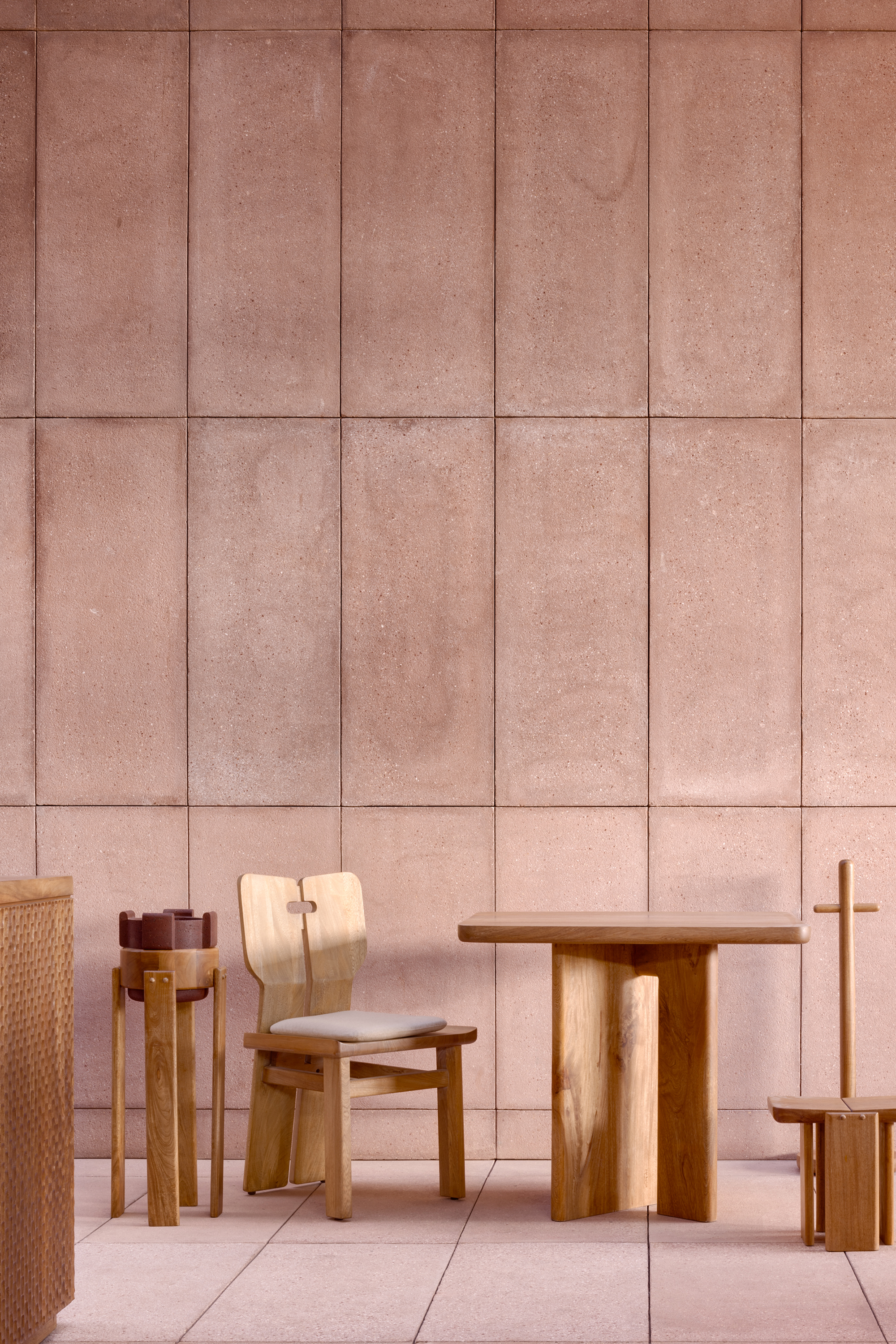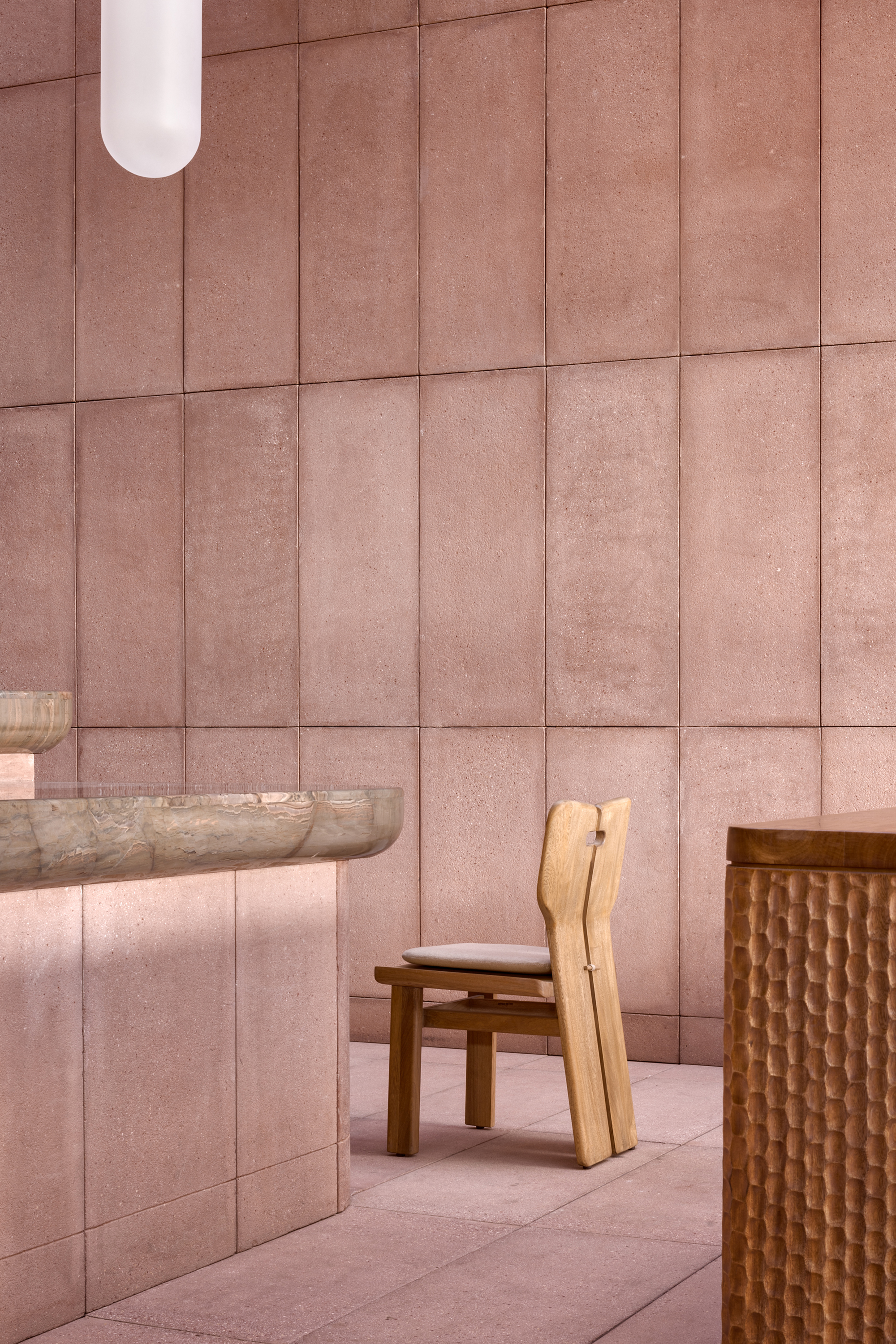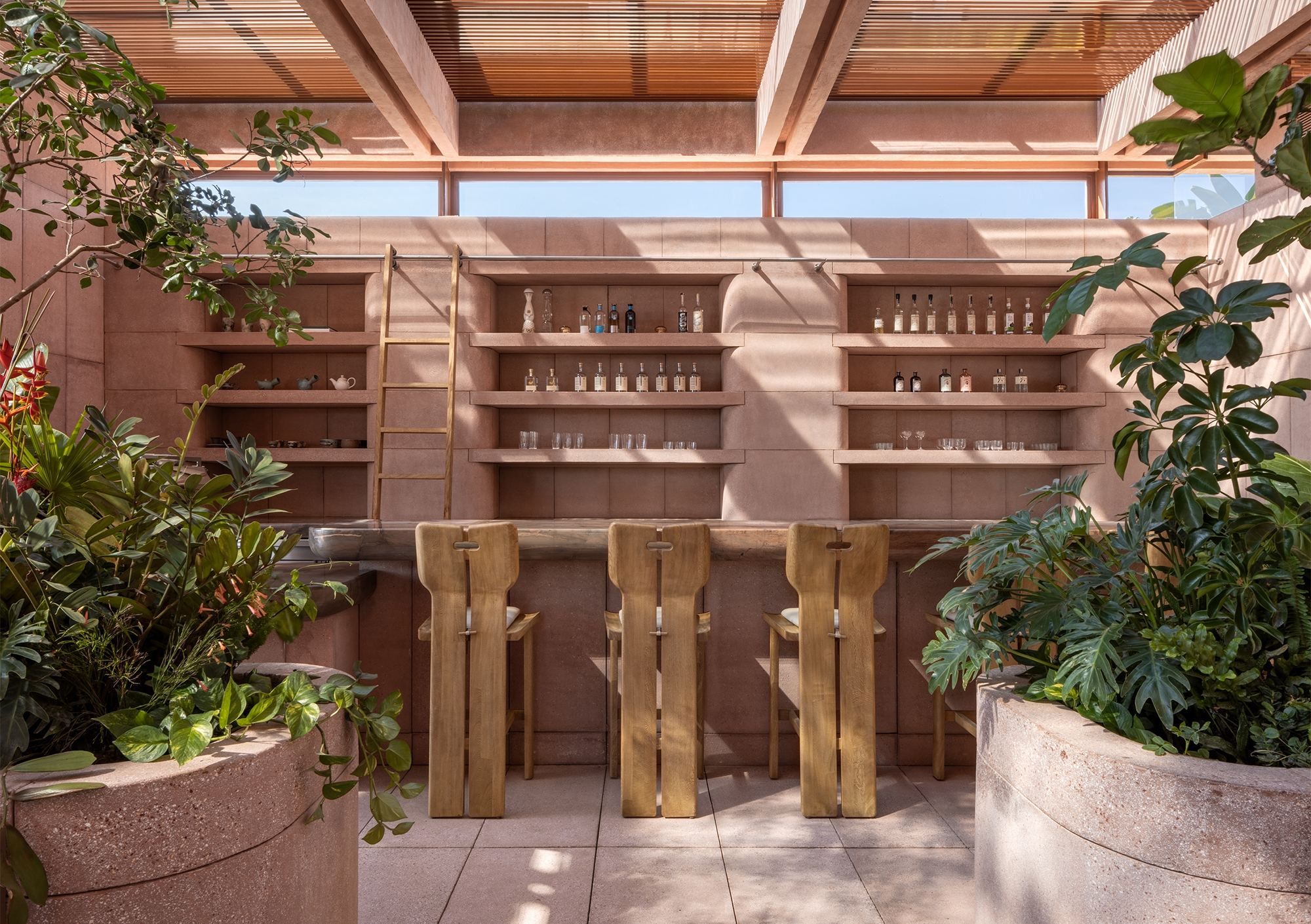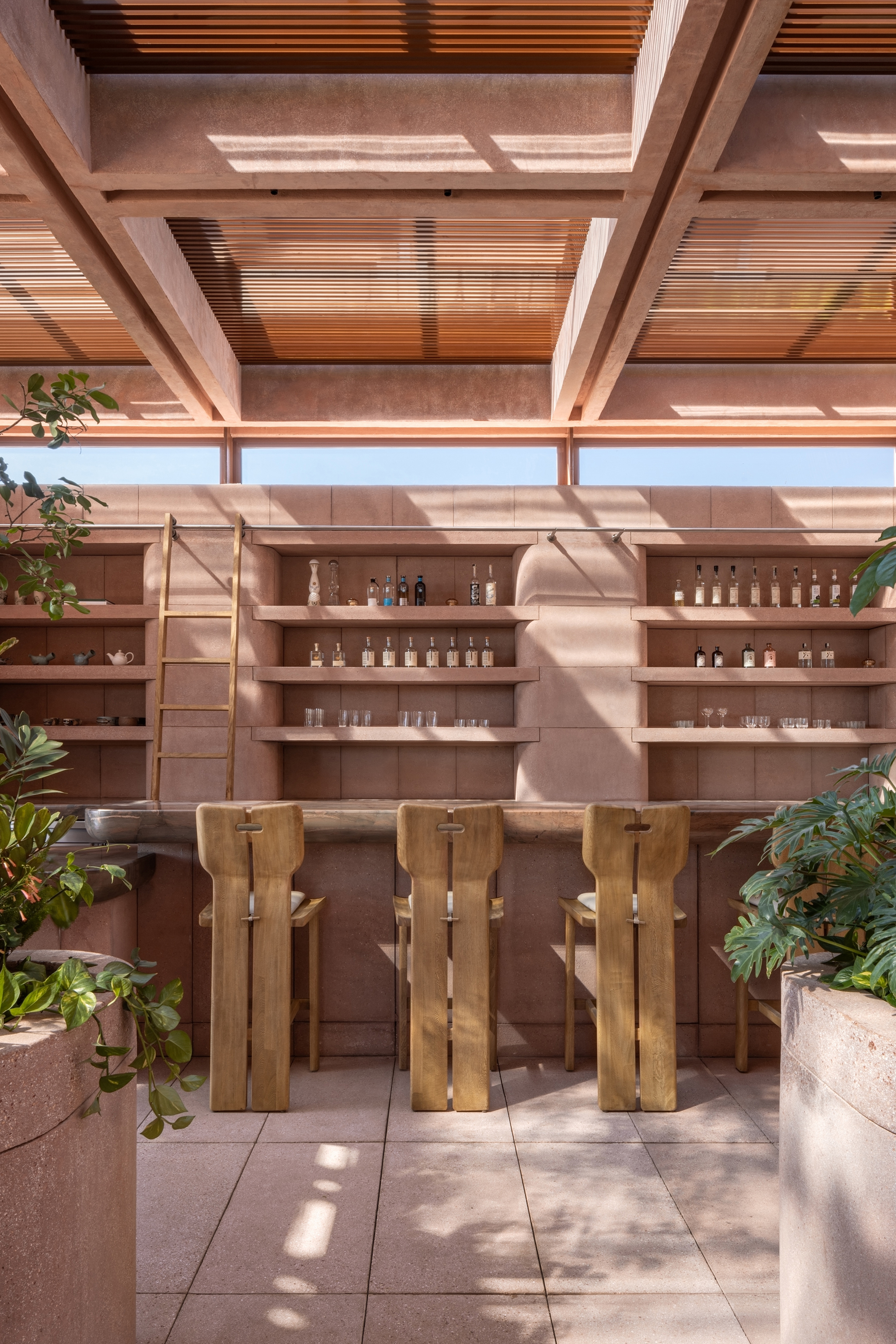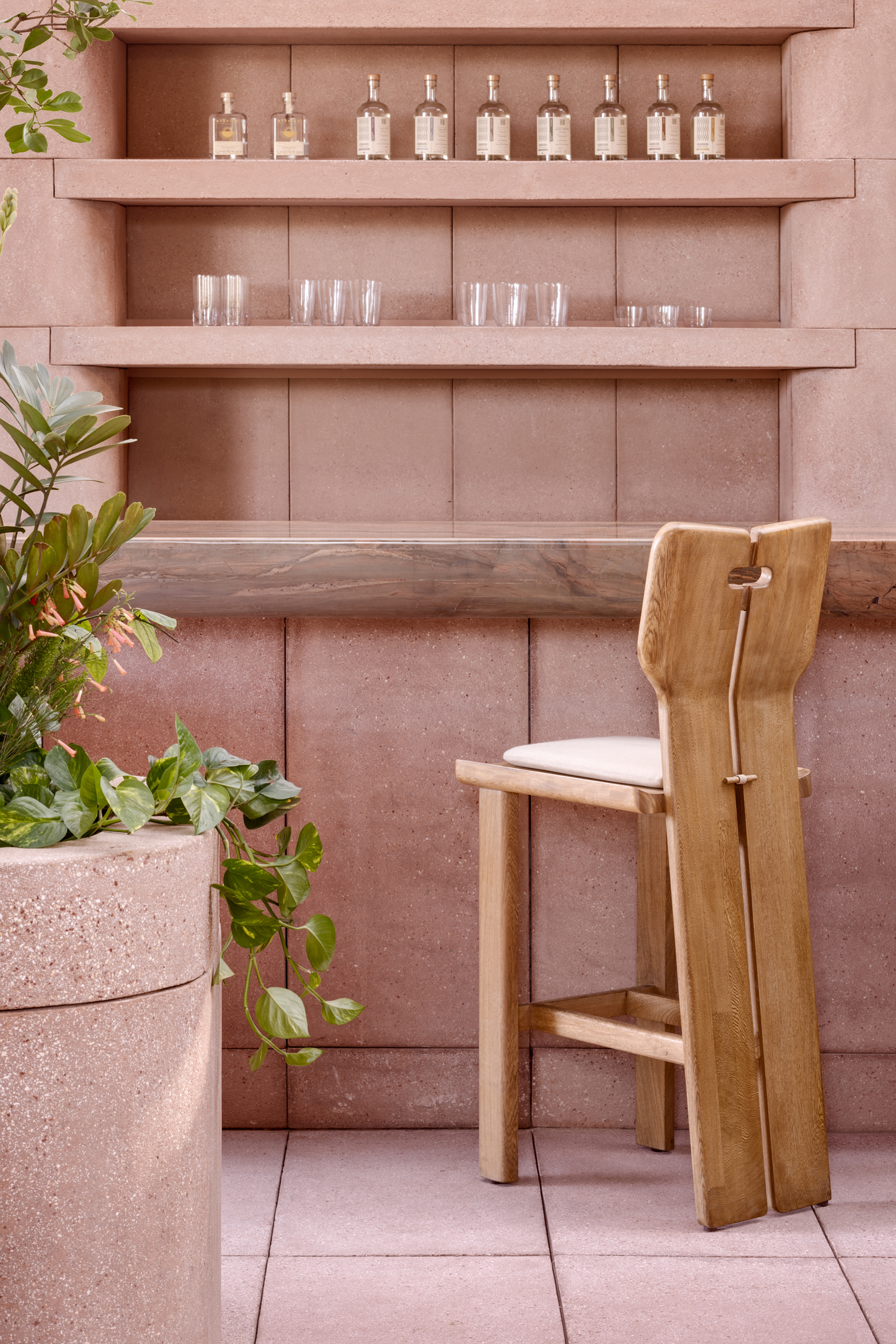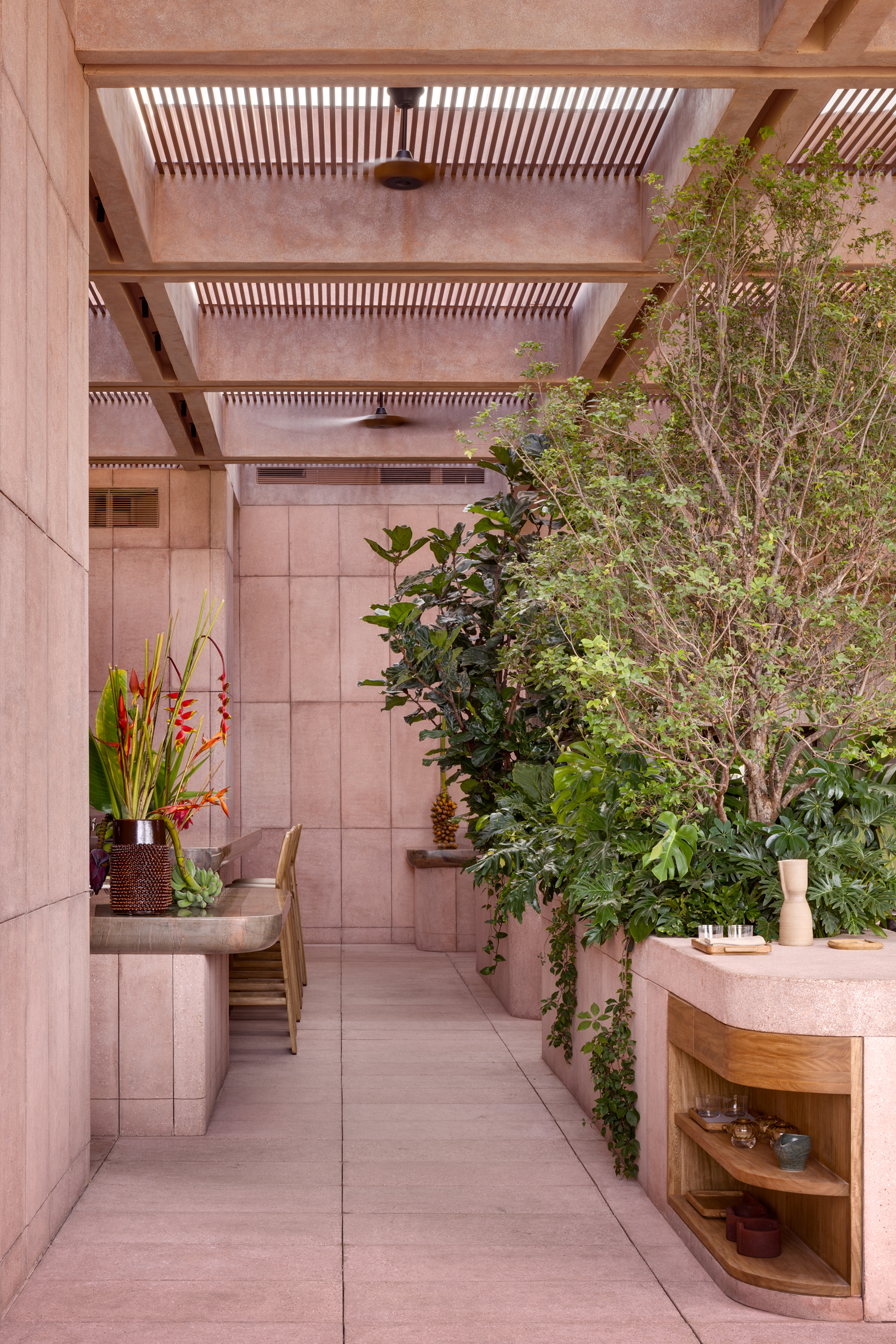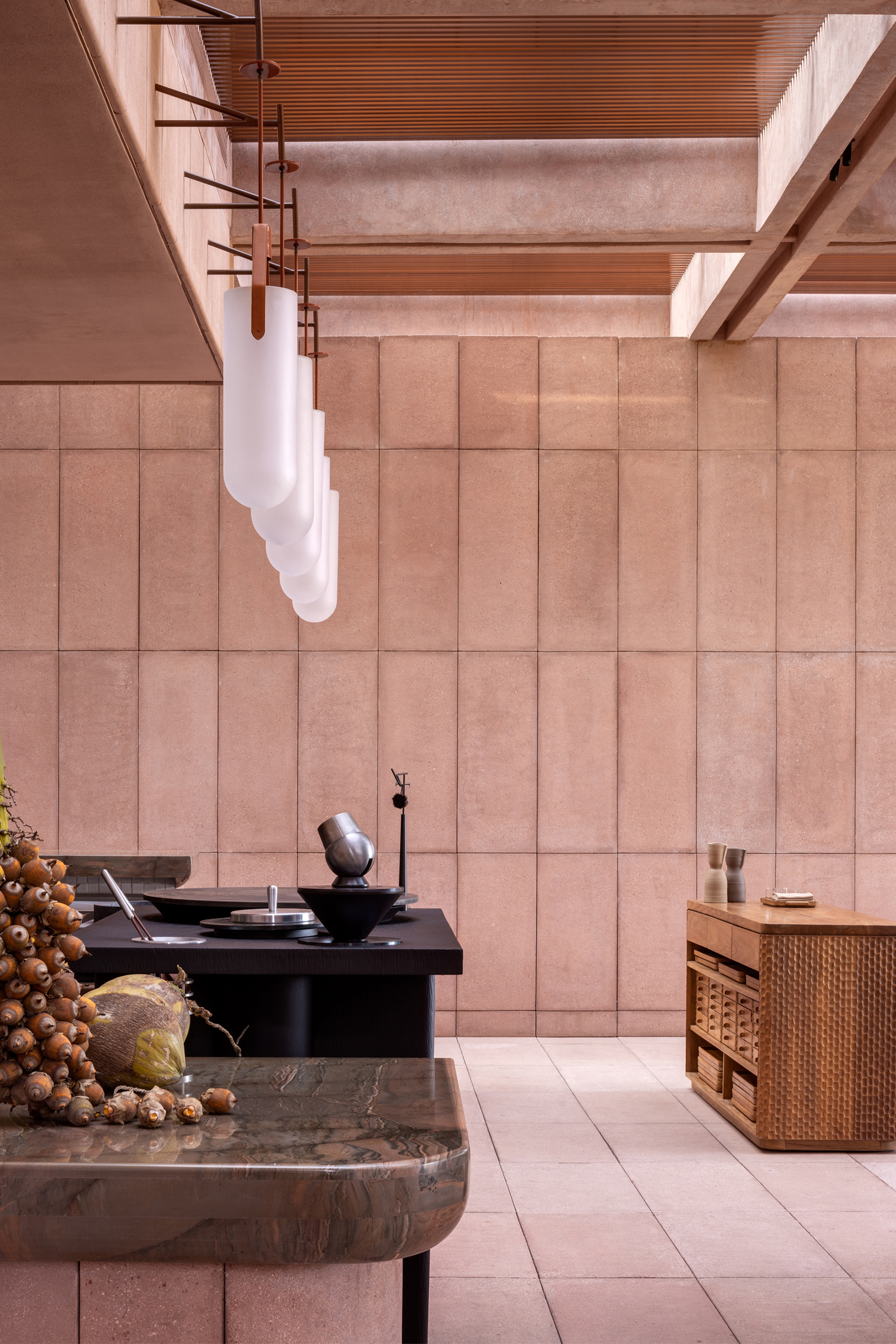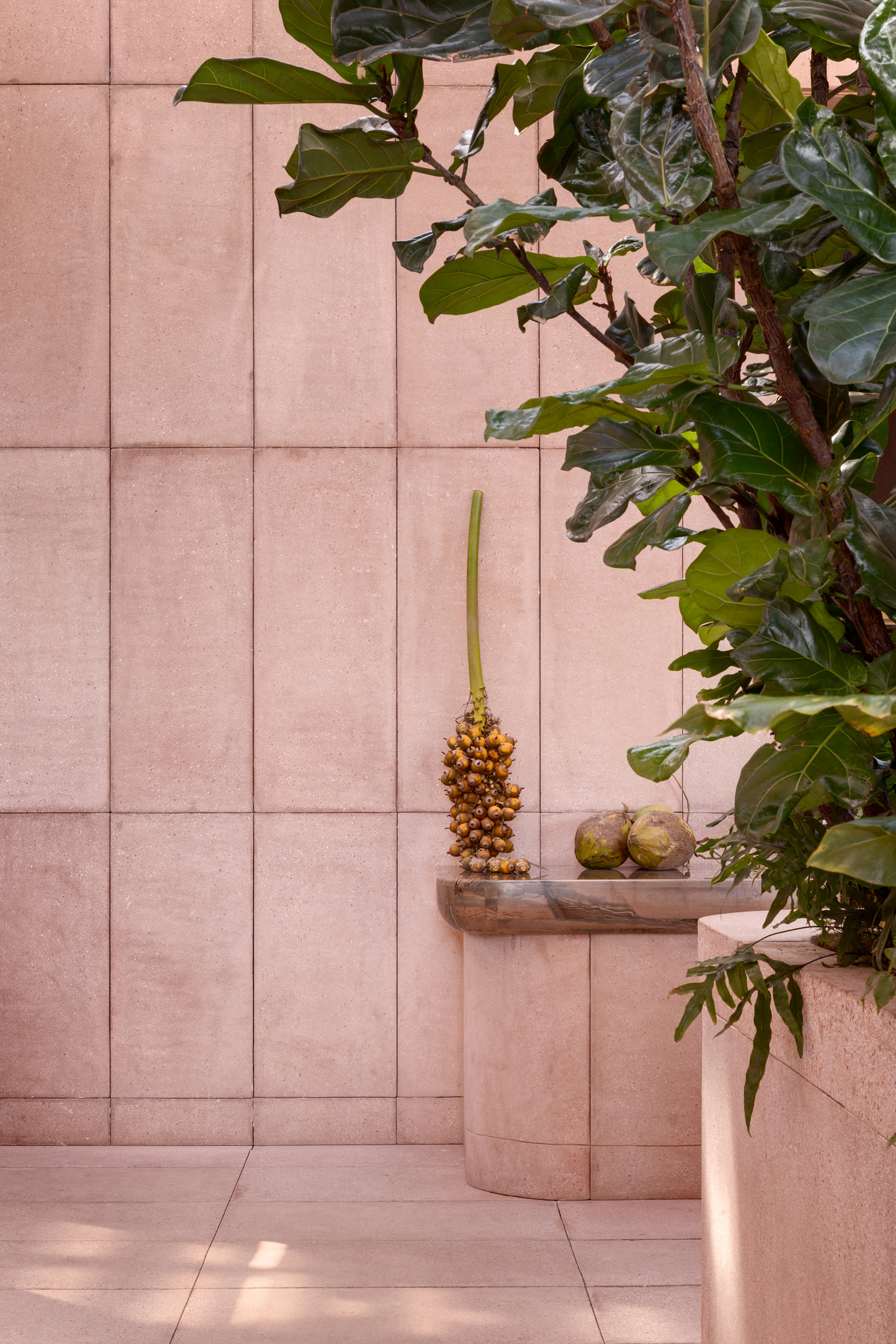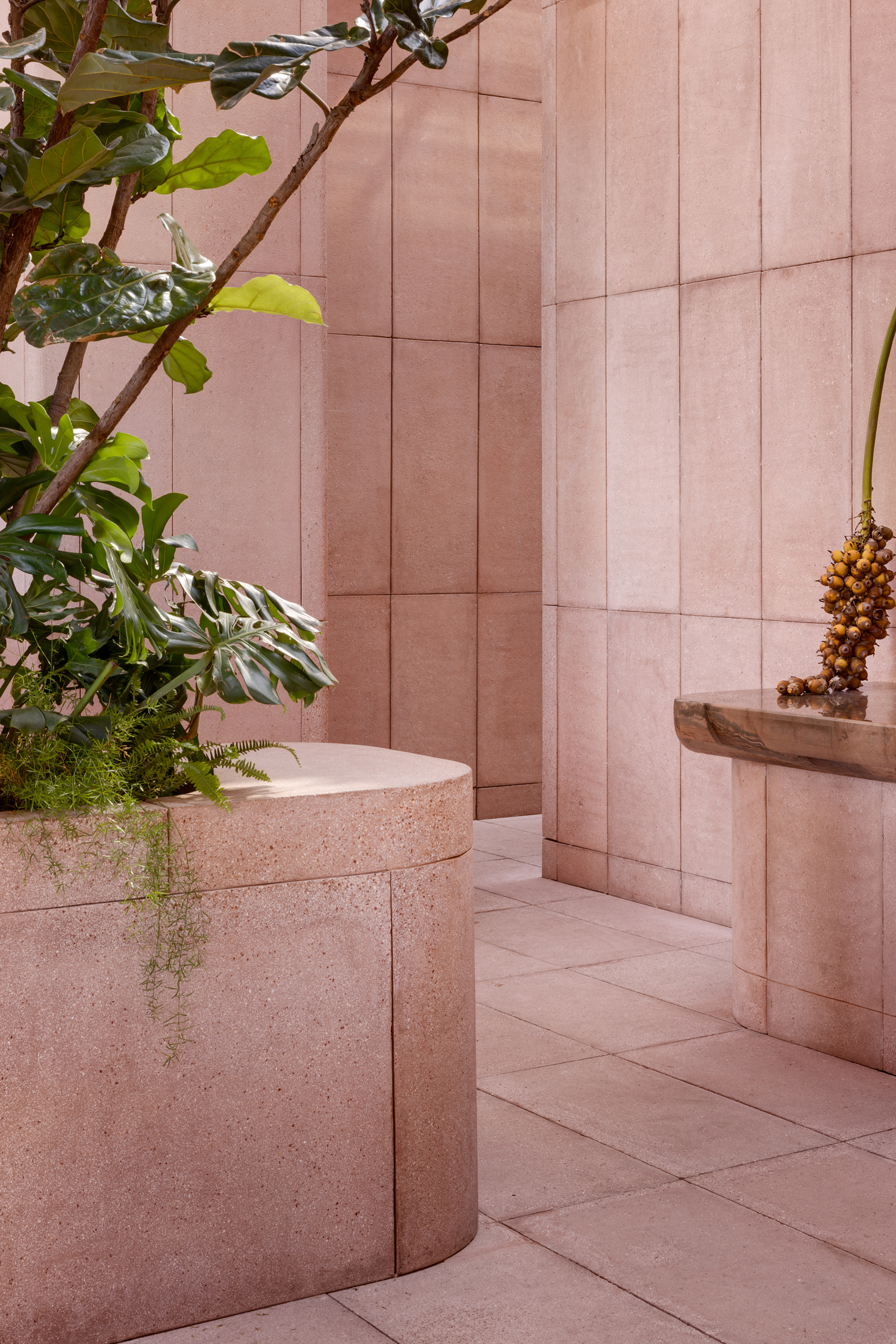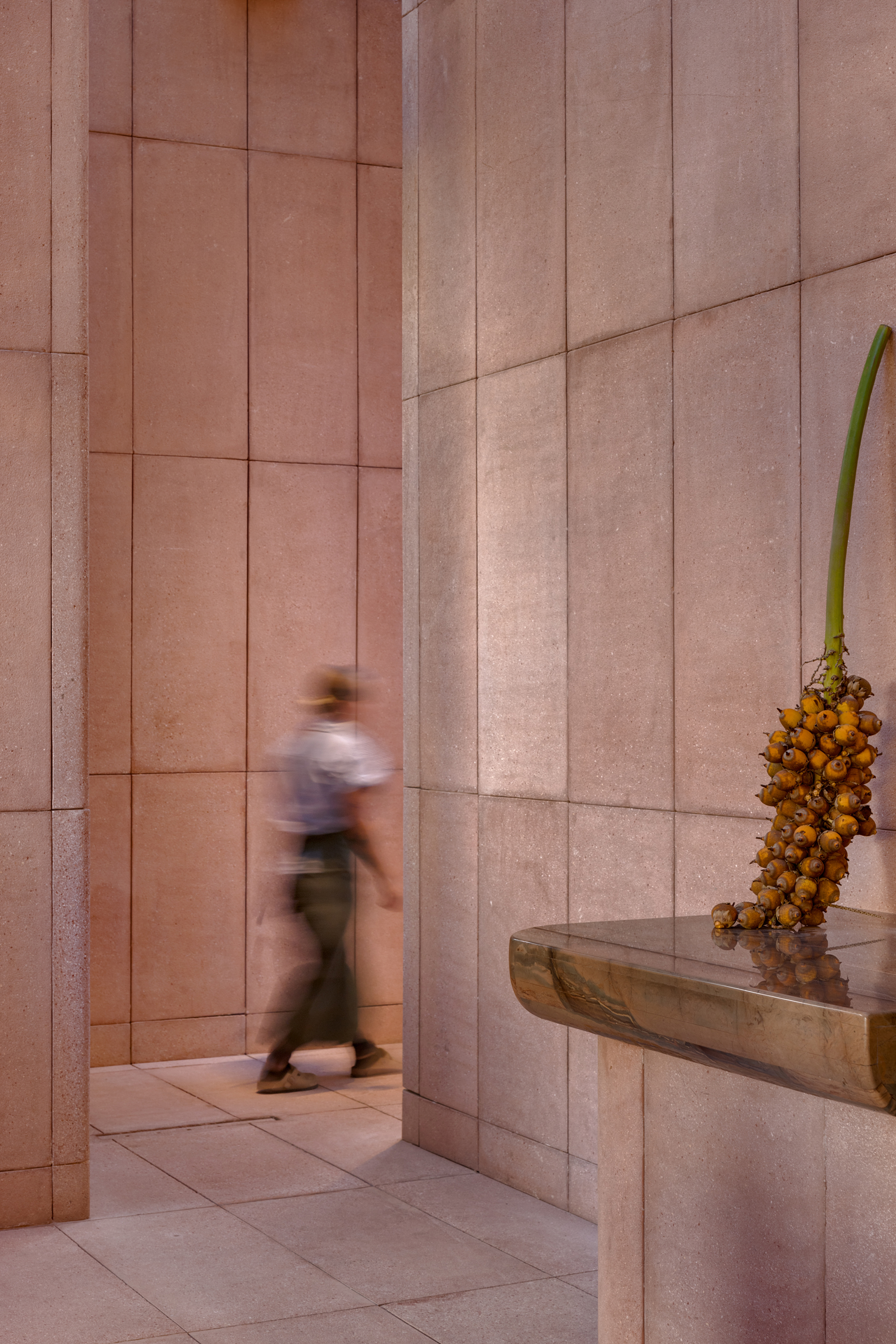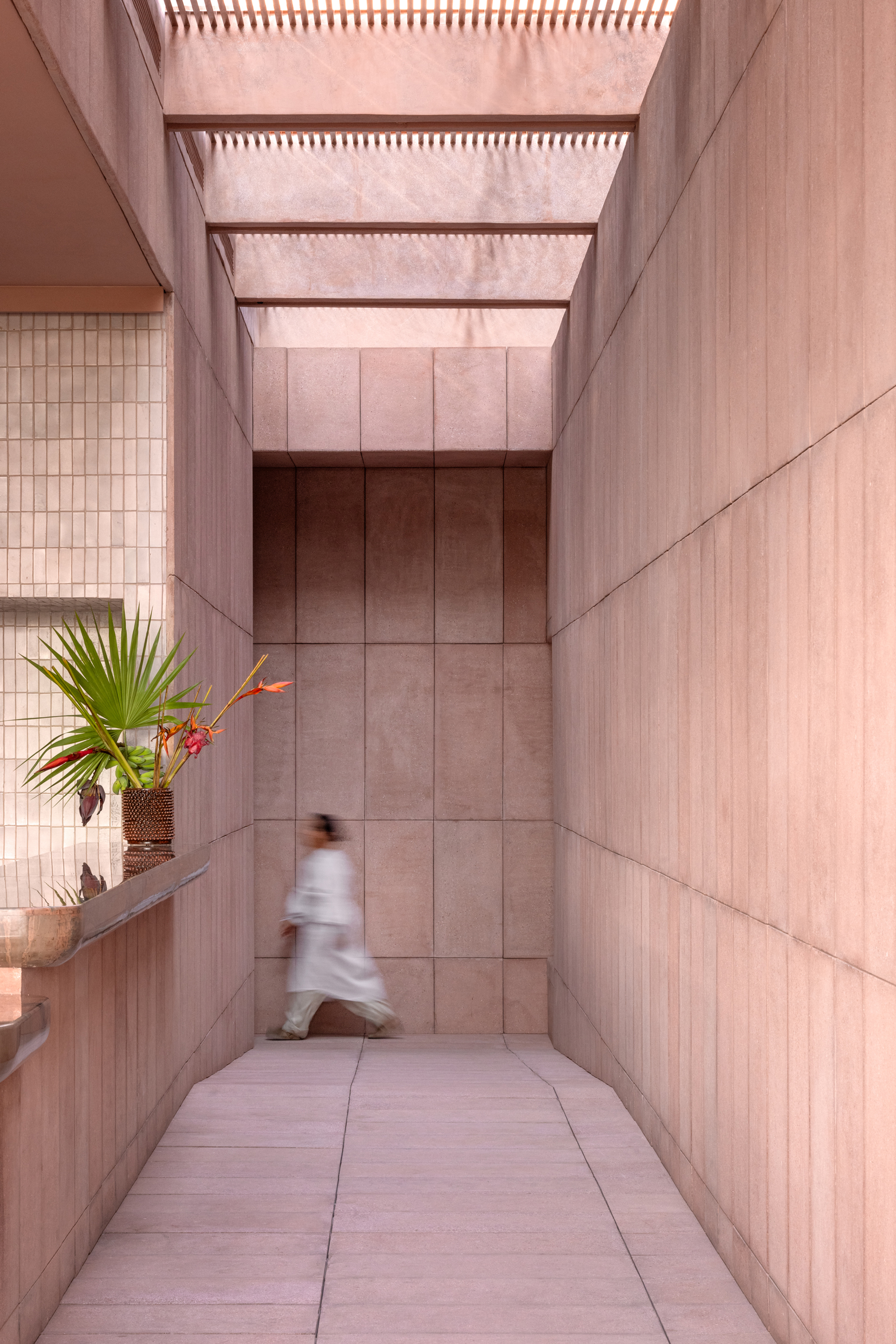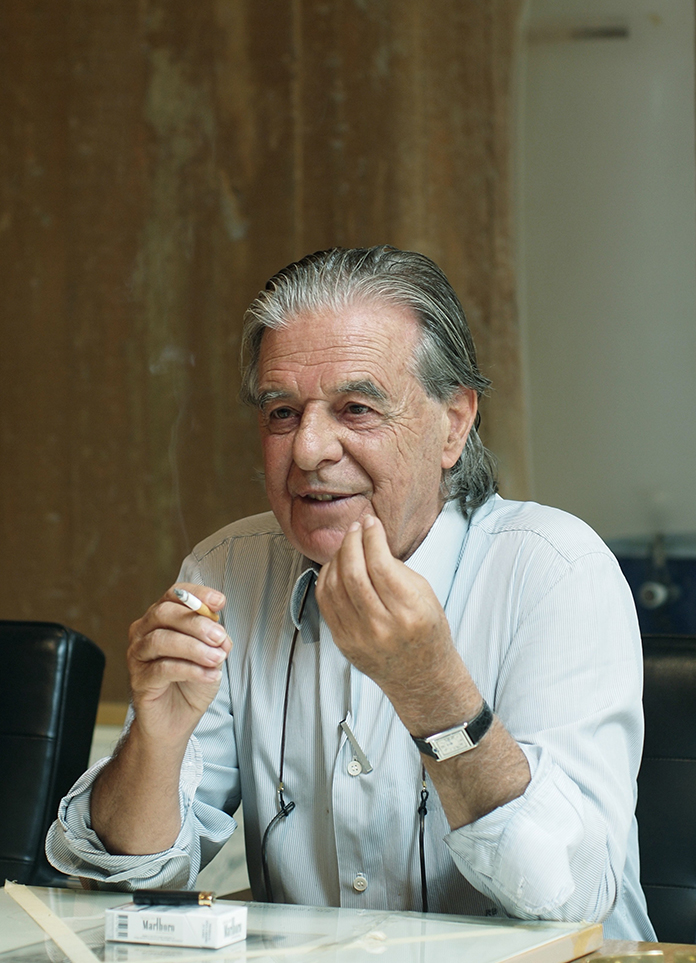Located on Mexico’s Pacific coast, Rubra is a restaurant designed by Ana Paula de Alba and Ignacio Urquiza for chef Daniela Soto-Innes. The project is located on the Punta Mita peninsula, at one end of Banderas Bay. Lush vegetation flanks the access route. Guests can arrive on foot, by bicycle, or in a golf cart, along a path that disconnects them from the urban context and leads to a blind façade, inviting curiosity about what lies beyond.
A low tunnel (2.1 meters high and 6 meters long) emerges in the main terrace, a large space with views of the Sierra Madre Occidental and the ocean horizon across the bay. The space is made up of volumes of different heights, shapes, and dimensions, elements that define the structure and contain the program: an open kitchen, wine cellar, and bars. The flowerbeds also provide benches and the main seating area for visitors.

